Amara ambulans is a species of beetle in the family Carabidae. It is found in Eastern Europe and in Asia.

Amara aulica is a species of beetle of the genus Amara in the Harpalinae subfamily. It is native to Europe.
Amara biarticulata is a species of beetle in the family Carabidae. It is found in East Europe and further east in the Palearctic realm.
A. armeniaca may refer to:

Diacrisia sannio, the clouded buff, is a moth of the family Erebidae. The species was first described by Carl Linnaeus in his 1758 10th edition of Systema Naturae. It is found in the Palearctic realm from Ireland to Siberia. It is not found in North Africa. In the Russian Far East, eastern China, Korea, and Japan it is replaced by Diacrisia irene.
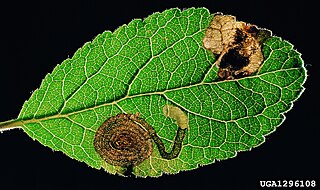
Stigmella prunetorum is a moth of the family Nepticulidae. It is found in all of Europe.

Lyonetia prunifoliella is a moth in the family Lyonetiidae.

Gillmeria is a genus of moths in the family Pterophoridae. The genus was described by the English schoolteacher and entomologist, James William Tutt in 1905.
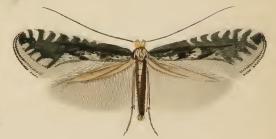
Parornix petiolella is a moth of the family Gracillariidae. It is known from Austria, Bulgaria, the Czech Republic, France, Germany, Hungary, Italy, Kazakhstan, Luxembourg, Moldova, Poland, Romania, the European part of Russia, Slovakia, Switzerland and Ukraine.

Parornix finitimella is a moth of the family Gracillariidae. It is found in nearly all of Europe, except Ireland, the Iberian Peninsula and parts of the Balkan Peninsula.

Coleophora prunifoliae is a moth of the family Coleophoridae. It is found from Scandinavia to the Pyrenees, Italy and Romania and from Great Britain to southern Russia.
Gillmeria armeniaca is a moth of the family Pterophoridae that is found in Armenia, Russia, Kazakhstan and Iran.

Eidophasia messingiella is a moth of the family Plutellidae. It is found in most of Europe.
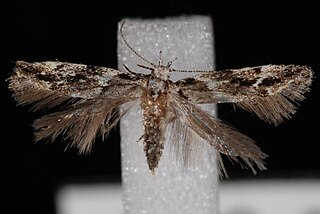
Recurvaria nanella, the lesser bud moth, is a moth of the family Gelechiidae. It is widely distributed in Europe and is also found in Turkey, the Near East, North Africa, the Caucasus, Transcaucasia, Kazakhstan and south-eastern Siberia. It is also found in North America, where it is probably introduced.

Hedya dimidiana is a moth of the family Tortricidae. It was described by Carl Alexander Clerck in 1759. It is found from most of Europe, through Russia to Japan. It has also been recorded from Vietnam.
Bucculatrix armeniaca is a moth in the family Bucculatricidae. It is found in Armenia and the southern part of European Russia. The species was first described by G. Deschka in 1992.

Cnephasia cupressivorana is a species of moth of the family Tortricidae. It is found on Corsica, Sardinia, Sicily and in Belgium, France, Spain, Italy, Switzerland, Austria, Croatia, Slovenia, Albania, Romania, North Macedonia, Greece, Asia Minor and Kyrgyzstan.
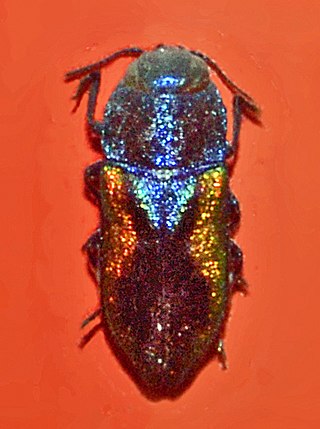
Anthaxia lucens is a species of jewel beetle belonging to the family Buprestidae, subfamily Buprestinae.
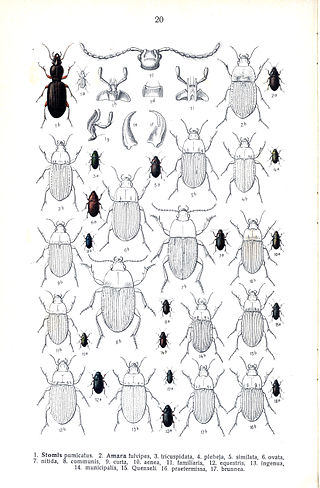
Amara plebeja is a species of ground beetle native to Europe.

Amara fulva is a species of ground beetle native to Europe.













